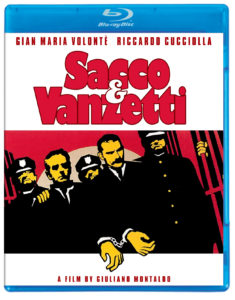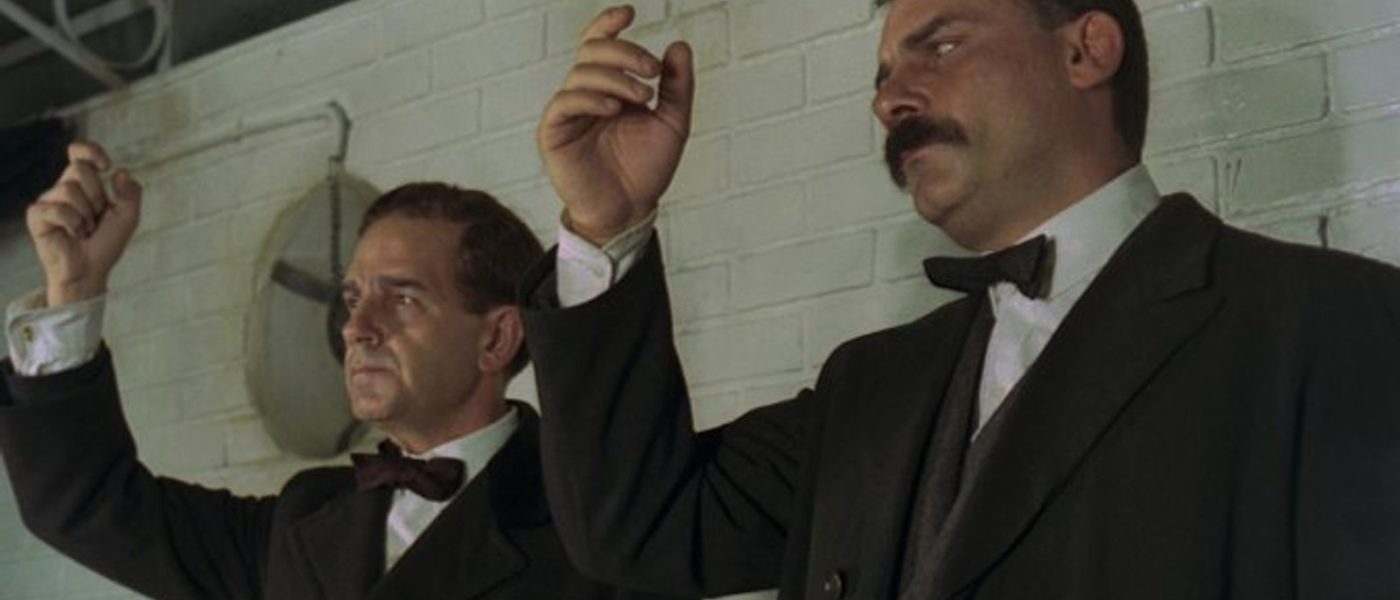Riveting Italian Docudrama Depicts one of the Most Polarizing Trials in U.S. History
DIRECTED BY GIULIANO MONTALDO/ITALIAN/1971
BLU-RAY STREET DATE: MAY 3, 2022/KL STUDIO CLASSICS
In this short video review, David Blakeslee discusses Sacco & Vanzetti (1971), an Italian-French co-production that reenacts one of the biggest political and legal controversies of the 1920s.

The official blurb:
Riccardo Cucciolla (Un Flic, Borsalino & Co.) and Gian Maria Volontè (A Fistful of Dollars, Lucky Luciano) are Sacco & Vanzetti, subjects of one of the most infamous trials of the twentieth century. Boston, 1920. Italian immigrants Nicola Sacco and Bartolomeo Vanzetti, known for their anarchist beliefs, stand accused of robbery and murder. Their political leanings are used as evidence against them, but defense attorney Fred Moore (Milo O’Shea, The Verdict) is convinced of their innocence. As anti-immigrant and anti-radical sentiments run high, one of the most polarizing trials in U.S. history unfolds in this riveting docudrama from director Giuliano Montaldo (Grand Slam). The musical score was composed and conducted by the great Ennio Morricone (The Good, the Bad and the Ugly) featuring folk music legend Joan Baez. The top-notch cast also includes Cyril Cusack (Fahrenheit 451), Geoffrey Keen (The Spy Who Loved Me), William Prince (Cyrano de Bergerac) and Claude Mann (Army of Shadows).
Besides the comments offered in the clip, other details that stand out include:
- Availability of both the English and Italian language soundtracks. The English track is easily recommended for American audiences and English-speakers in general, since the events of the film took place in the USA and the patrician accents of the judge, prosecuting attorney and others powerfully convey the scorn and contempt those men held toward the pair on trial. The Italian track reportedly includes dialogue that is more pointedly political than what we hear in the American version, though the English subtitles remain the same regardless of the audio track selected. When Vanzetti makes his final entrance to the death chamber, about to take his seat in the electric chair, he clearly says “Viva l’anarchia” even though the subtitles quotes him as simply saying “I am innocent”. There are also incongruous moments when listening to the Italian soundtrack where character dialogue is not translated other than a text that states “(men speaking in Italian)” or words to that effect. It may be a nitpick, but it would be nice to have an accurate translation of the Italian script as an option with the subtitles.
- Opportunity to get perspective on a truly epic and pivotal chapter in American social history from a European perspective, informed by a director, cast members and screenwriters all highly attuned to the ongoing cultural relevance of events they portrayed nearly 50 years after they happened – which remain highly applicable to current events and controversies observed a hundred years later in American life.

Though the film, like numerous other condensed summaries of the complicated case that it’s based on, has been subject to criticism for over-simplifying the narrative or distorting various facts, I don’t think it’s fair to expect a feature film to strive for neutral objectivity or comprehensive presentations of “both sides” of an argument. Basing much of the script on original source materials (court transcripts, published essays and interviews, etc.) and incorporating archival film footage of the worldwide protests demanding clemency for Sacco and Vanzetti grounds the story in a context that is quickly identifiable and corresponding to so many aspects of the criminal justice system and news media as those forces still function today.
Sacco & Vanzetti won several awards upon its release, including a Best Actor award at the 1971 Cannes Film Festival, which went to Riccardo Cucciolla for his portrayal of Nicola Sacco.
Finally, the Joan Baez-Ennio Morricone collaboration “Here’s to You”, a theme song based on the words of Bartolomeo Vanzetti, went on to have a fascinating afterlife, eventually winding up as part of the soundtrack to the Metal Gear Solid video game series (you can hear it around the 4:00 mark in this video), which I have to admit I’ve never played. Now my curiosity is piqued as I contemplate the journey of this edifying peacenik anthem that wound up as accompaniment to what looks to be a hyperviolent and rather exploitive simulated assassin franchise. I guess “anarchy” comes in different flavors.


